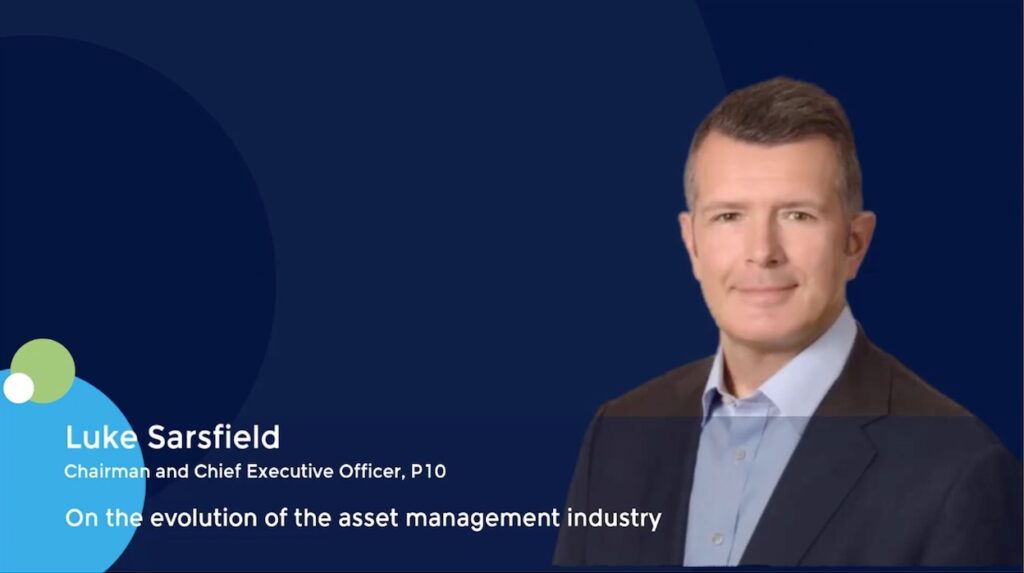Scott Parrish, Head of Private Equity, State of Wisconsin Investment Board, on private capital trends
Scott Parrish, the Head of Private Equity at the State of Wisconsin Investment Board (SWIB), joined Giovanni Amodeo to discuss the key forces shaping today’s private markets. With nearly 20 years of experience at SWIB, overseeing $22.5 billion in capital, Parrish provided a grounded and forward-looking view of where private capital is heading, the challenges LPs face, and what it takes to succeed in a data-driven investment environment.
Key Themes & Insights from the Conversation
1. Market Cycles & Where We Are Now
Parrish recounted the major market events shaping private capital since the 1990s:
-
Tech Bubble (2000s)
-
Global Financial Crisis (2008)
-
COVID-19 Pandemic
-
Current Inflation & High Interest Rate Era
“We’re at an inflection point. The environment is demanding sharper investment acumen. Good performance has lifted all boats—but that’s changing.”
— Scott Parrish
He noted that the private credit landscape has shifted dramatically. Historically, low base rates meant fewer incentives for private credit allocations. Now, with higher interest rates, the asset class is experiencing increased LP interest—but not without caveats.
2. The Rise—and Risks—of Private Credit
Private credit is booming, but Parrish issued a clear warning: not all managers are equal.
“Returns have been strong, but some subpar managers have ridden the wave. Going forward, performance will require discernment.”
He stressed that manager selection is now critical. The era of easy alpha in private markets is fading, and the dispersion between top- and bottom-quartile GPs is widening. For institutional investors like SWIB, this means more rigorous due diligence and data-driven decision-making.
3. Inflation: The Biggest Unknown
When asked which macroeconomic factor keeps him up at night, Parrish was candid:
“Inflation. No one fully understands what it will do to companies or portfolios. It’s uncharted territory for many investors.”
He explained that most historical benchmarks and performance models are based on decades of low inflation and near-zero rates. Today’s environment demands a recalibration of underwriting assumptions and return expectations.
4. What SWIB Looks for in LP Talent
Parrish offered a clear profile of the ideal institutional investor in today’s private capital markets:
-
Strong data analytics and modeling capabilities
-
Excellent verbal and written communication
-
The ability to interrogate GPs and ask tough questions
-
Curiosity and a willingness to challenge assumptions
Interestingly, a private equity background is not essential. At SWIB, trainable aptitude and analytical depth matter more than pedigree.
5. Returns vs. Reputation: A Conscious Trade-Off
Parrish revealed that SWIB has passed on high-performing funds when ethical concerns arose.
“We’ve declined partnerships where reputational risks outweigh performance. We want long-term, quality relationships.”
This statement underscores SWIB’s fiduciary discipline and commitment to principled investing. With rising concerns around “credit-on-credit violence” and opaque practices in private credit, Parrish made it clear: LPs need to be vigilant.
6. Risk-Return Outlook: Conservative, Realistic, and Disciplined
As one of the few fully funded public pension funds in the U.S., SWIB’s approach to returns is rooted in long-term sustainability—not short-term yield chasing.
Private Credit:
-
Target: Low double-digit net returns
-
Risk Profile: Lower than equity, stable income focus
Private Equity:
-
Target: 15–16% net IRRs
-
Not chasing 20%+ returns
-
Diversified strategy across lower-middle market to large-cap
“Public market returns are likely to come down—and so will private market returns. The goal is to maintain a healthy spread over publics, net of fees.”
Final Takeaway: A Call for Selectivity and Integrity in a Shifting Market
Scott Parrish’s insights reflect the mindset of an experienced allocator navigating a new era in private capital. As inflation redefines performance baselines and transparency becomes more important than ever, LPs must sharpen their diligence, rethink past assumptions, and prioritize long-term partnerships over short-term gains.
For institutional investors, fund managers, and market observers, this conversation is a timely reminder that discipline, ethics, and data acumen are now non-negotiable in private markets.
Key timestamps:
00:07 Introduction to the Fireside Chats
01:02 Trends in Private Capital Allocation
02:03 Current Market Conditions and Challenges
02:45 Bifurcation in the Market
04:13 Sector Specialization vs. Generalist Funds
05:03 Defining Track Record in Fund Management
06:00 Assessing Spin-Off Managers
07:06 Identifying Red Flags in Fund Management
08:09 Evaluating New Strategies in Firms
09:49 Outlook on Asset-Backed Financing
10:59 Future Distress Levels in the Market
12:00 Interest Rate Scenarios and Planning
12:49 Impact of Tariffs on Market Valuations
13:38 Data Transparency in Private Capital
14:55 Opportunities Outside the US
16:20 Partnerships Between Private Credit and Banks
19:17 Data Utilization in Investment Decisions
21:08 Concerns Over Macro Trends
22:19 Risk-Return Approach in Investment
23:48 Evaluating Risks in Private Credit
25:04 Conclusion and Closing Remarks












